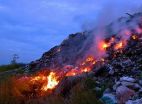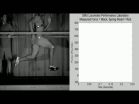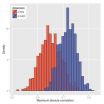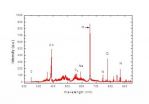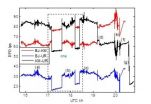(Press-News.org) BOULDER -- Unregulated trash burning around the globe is pumping far more pollution into the atmosphere than shown by official records. A new study led by the National Center for Atmospheric Research estimates that more than 40 percent of the world's garbage is burned in such fires, emitting gases and particles that can substantially affect human health and climate change.
The new study provides the first rough estimates, on a country-by-country basis, of pollutants such as particulates, carbon monoxide, and mercury that are emitted by the fires. Such pollutants have been linked to serious medical issues.
The researchers also estimated emissions of carbon dioxide, the most common greenhouse gas produced by human activity.
Unlike emissions from commercial incinerators, the emissions from burning trash in open fires often go unreported to environmental agencies and are left out of many national inventories of air pollution. For that reason, they are not incorporated into policy making.
"Air pollution across much of the globe is significantly underestimated because no one is tracking open-fire burning of trash," said NCAR scientist Christine Wiedinmyer, lead author of the new study. "The uncontrolled burning of trash is a major source of pollutants, and it's one that should receive more attention."
Quantifying the extent of burning trash may change how policy makers track emissions, as well as how scientists incorporate air pollution into computer models used to study the atmosphere.
Because trash burning is unregulated and unmonitored, Wiedinmyer said that actual emissions could be larger or smaller than the study's estimates by a factor of two. Still, the analysis represents the most comprehensive effort to date to account for emissions from trash burning.
The new study, published in Environmental Science & Technology, was funded by the National Science Foundation, which is NCAR's sponsor. It was co-authored by scientists from the University of Montana and the U.S. Environmental Protection Agency who were also involved in measuring the composition of trash-burning emissions.
Shrouded in smoke
Trash burning is a global phenomenon. But it is most prevalent in developing countries where there are fewer trash disposal facilities, such as landfills and incinerators.
The amount of garbage burned in remote villages and crowded megacities is likely on the rise, as more people worldwide are consuming more goods. The trash often contains discarded plastics and electronics as well as traditional materials such as food scraps and wood.
Wiedinmyer began wondering about the impact of burning trash while visiting remote villages in Ghana. The villages were shrouded in smoke caused in part from trash fires that smoldered all day.
To estimate emissions from trash fires, Wiedinmyer and her co-authors compared population figures and per capita waste production with official tallies of trash disposal for each country in the world. They estimated that 1.1 billion tons, or 41 percent, of the total waste generated worldwide is disposed of through unregulated burning every year.
The countries that produce the most total waste, according to the study's methods, are heavily populated countries with various levels of industrial development: China, the United States, India, Japan, Brazil, and Germany. But the nations with the greatest emissions from trash burning are populous developing countries: China, India, Brazil, Mexico, Pakistan, and Turkey, the study concluded.
By analyzing consumption patterns in each country, the research team then estimated the type and amount of pollutants from the fires.
The study concluded that as much as 29 percent of human-related global emissions of small particulates (less than 2.5 microns in diameter) come from the fires, as well as 10 percent of mercury and 40 percent of a group of gases known as polycyclic aromatic hydrocarbons (PAHs). These pollutants have been linked to such significant health impacts as decreased lung function, neurological disorders, cancer, and heart attacks.
Trash burning in some countries accounts for particularly high quantities of certain types of pollutants. In China, for example, 22 percent of larger particles (those up to 10 microns in diameter) come from burning garbage.
The global impact on greenhouse gas emissions appears to be less, though still significant, with burning trash producing an estimated 5 percent of human-related carbon dioxide emissions. (By comparison, the Kyoto Protocol strove for a global 5 percent cut in greenhouse-gas emissions from industrialized countries.) In certain developing countries—such as Lesotho, Burundi, Mali, Somalia, and Sri Lanka—the trash burning produces more carbon dioxide than is tallied in official inventories. This discrepancy can be important in international negotiations over reducing greenhouse gas emissions.
Wiedinmyer said the next step in her research will be to track the pollutants to determine where they are having the greatest impacts.
"This study was a first step to put some bounds on the magnitude of this issue," she said. "The next step is to look at what happens when these pollutants are emitted into the atmosphere—where are they being transported and which populations are being most affected."
INFORMATION:
About the article
Title: Global Emissions of Trace Gases, Particulate Matter, and Hazardous Air Pollutants from Open Burning of Domestic Waste
Authors: Christine Wiedinmyer, Robert J. Yokelson, and Brian K. Gullett
Publication: Environmental Science and Technology
On the Web
For news releases, images, and more:
http://www.ucar.edu/atmosnews
The University Corporation for Atmospheric Research (UCAR) manages NCAR under sponsorship by the National Science Foundation. Any opinions, findings, conclusions, or recommendations expressed in this release do not necessarily reflect the views of the National Science Foundation.
Trash burning worldwide significantly worsens air pollution
2014-08-26
ELSE PRESS RELEASES FROM THIS DATE:
Fact or fiction: Which do moviegoers prefer?
2014-08-26
Do you feel sadder watching a documentary about war or a drama about a young person dying of cancer? According to a new study in the Journal of Consumer Research, consumers mistakenly believe they will have stronger emotional reactions when stories are based on true events rather than fiction.
"Consumers may choose to read a tragic fictional story because they assume that knowing it was fictional would make them less sad than reading a less dramatic, but true story," write authors Jane E. J. Ebert (Brandeis University) and Tom Meyvis (New York University). "However, the ...
No purchase required to win? Devoted customers not so sure
2014-08-26
COLUMBUS, Ohio – You've probably seen – or even participated in – promotional contests offered by retailers in which they say "no purchase required to win."
But if you're a loyal customer of that retailer, you don't necessarily believe that, a new study suggests. You figure you must have some secret advantage over other, less-devoted customers.
In fact, the new research finds that loyal customers of a company feel that they are more likely and more deserving than others to win perks from the business – even those that are randomly given out.
"This is driven by people's ...
Are consumers more likely to purchase unintentionally green products?
2014-08-26
A Fortune 500 company is redesigning a popular product using materials that are friendlier to the environment. How will consumers respond to the newly redesigned, "greener" product? According to a new study in the Journal of Consumer Research, consumers are more likely to purchase a product if they think helping the environment is not the intended purpose of a product improvement.
"When a company makes a product that is better for the environment, consumers are actually less likely to purchase it if the environmental benefit is perceived as intentional rather than the ...
How do former churchgoers build a new moral identity?
2014-08-26
As their moral perspectives change, disillusioned churchgoers find it increasingly difficult to remain associated with their church, yet many also find it difficult to leave. According to a new study in the Journal of Consumer Research, former churchgoers experience deep identity crises as their most important relationships and beliefs are put at risk.
"Our research examines currently unsatisfied and former members of the Mormon Church, exploring the experiences of people who have lost their faith in the institution that structured both their morality and their day-to-day ...
ZigBee in the Sky
2014-08-26
26 August 2014 - A team of engineers from Singapore has successfully piloted the world's first ZigBee wireless sensor network (WSN) for satellite communications.
With the weight of payloads being a major constraint in satellite design, constructing a lightweight, low power-consuming, wireless communication system to do away with cabling inside the satellite has always been a challenge for system designers.
The engineering team at the Satellite Research Centre of Nanyang Technological University in Singapore launched VELOX-I, which consists of a nanosatellite weighing ...
Key to speed? Elite sprinters are unlike other athletes -- deliver forceful punch to ground
2014-08-26
VIDEO:
The contemporary view of running mechanics has been heavily influenced by the simple spring-mass model, a theory first formulated in the late 1980s. The spring-mass model assumes the legs work...
Click here for more information.
The world's fastest sprinters have unique gait features that account for their ability to achieve fast speeds, according to two new studies from Southern Methodist University, Dallas.
The new findings indicate that the secret to elite sprinting ...
Crohn's disease gene discovery points towards new treatments
2014-08-26
Genetic changes that occur in patients with the bowel condition Crohn's disease could hold clues to fighting the illness.
Scientists have identified chemical changes in the DNA of patients with Crohn's disease that could help to screen people for the disease.
These changes can be detected in blood samples, opening the door to a simple test for Crohn's disease.
The findings also offer clues to how the condition develops and reveal possible targets for new treatments.
Several genes have been linked to Crohn's disease but not everybody who inherits these genes will ...
Bombarded by explosive waves of information, scientists review new ways to process and analyze Big Data
2014-08-26
Big Data presents scientists with unfolding opportunities, including, for instance, the possibility of discovering heterogeneous characteristics in the population leading to the development of personalized treatments and highly individualized services. But ever-expanding data sets introduce new challenges in terms of statistical analysis, bias sampling, computational costs, noise accumulation, spurious correlations, and measurement errors.
The era of Big Data – marked by a Big Bang-like explosion of information about everything from patterns of use of the World Wide ...
Chinese scientists use laser-induced breakdown spectroscopy to identify toxic cooking 'gutter oil'
2014-08-26
The illegal use of waste cooking oil in parts of the nationwide food system is threatening the public's health in China.
Now scientists led by Professor Ding Hongbin at the Dalian University of Technology, in northeastern China, present a new means to confront this problem. In a study published in the Chinese Science Bulletin, Ding and fellow researchers at the university's School of Physics and Optoelectronic Engineering outline the potential use of laser-induced breakdown spectroscopy (LIBS) to rapidly distinguish between "gutter oil" and safe, edible oil.
...
Same-beam VLBI Technology successfully monitors the Chang'E-3 rover's movement on the lunar surface
2014-08-26
By using the same-beam VLBI technology, differential phase delay successfully monitored the lunar rover's movement during the Chang'E-3 mission when rover and lander was carrying out the tasks of separation and took photos of each other. The sensitivity of rover motion monitoring was between 50-100mm.Furthermore, relative position between rover and lander was precisely measured by taking the use of the DPD's changing trend. Professor LIU Qing hui and his student ZHENG Xin from the Shanghai Astronomical of observatory, Chinese Academy of Sciences, obtained this result when ...
